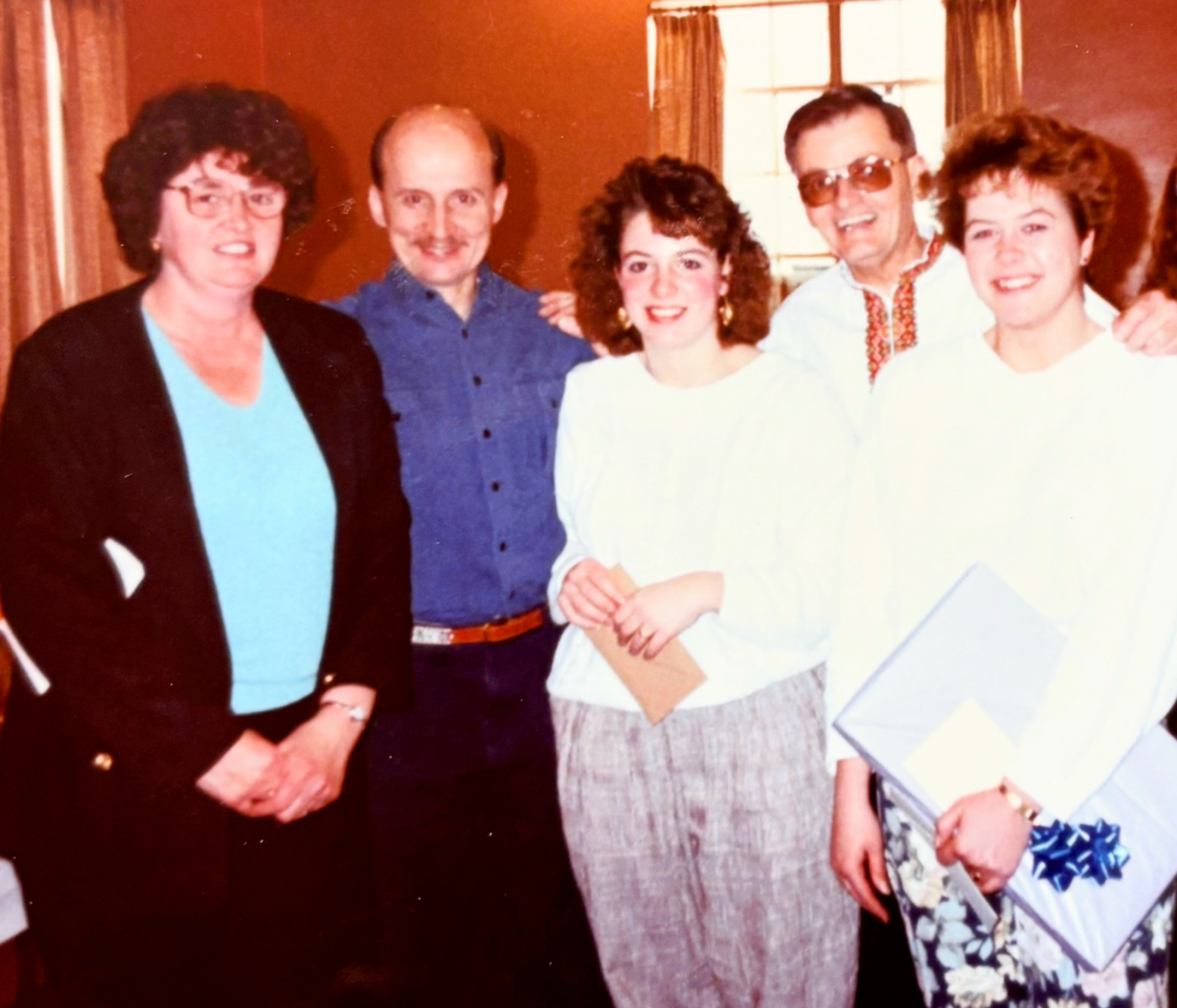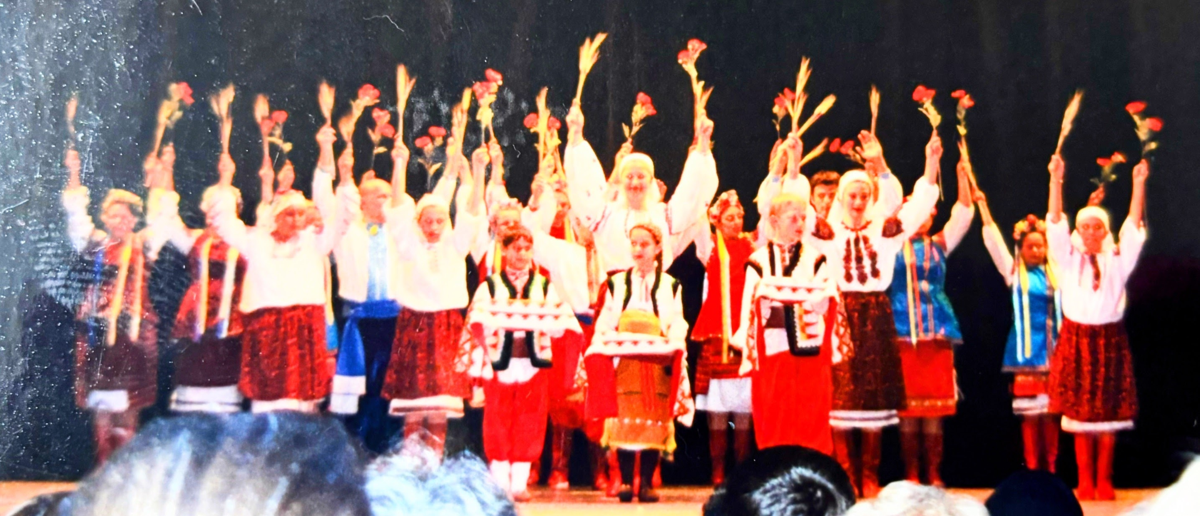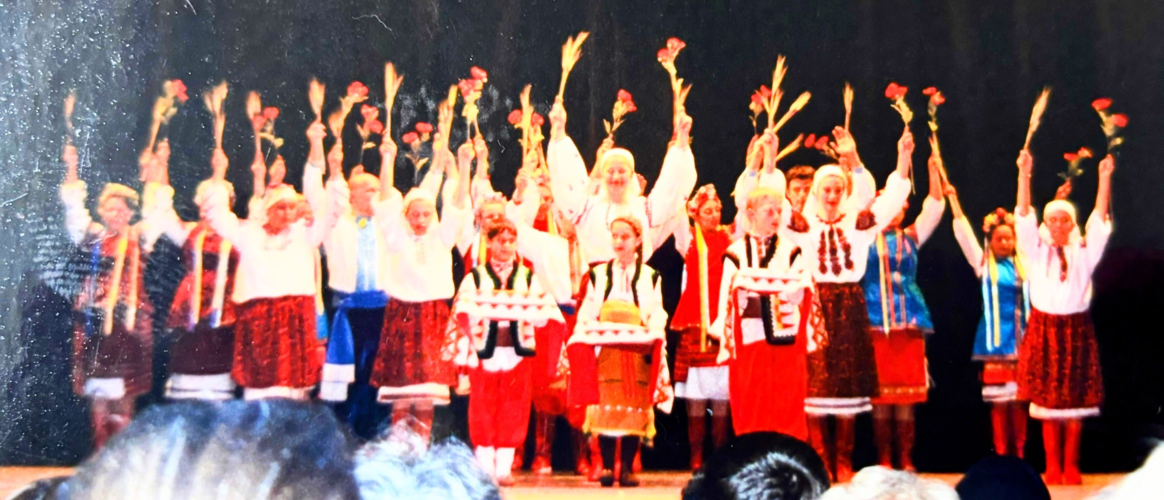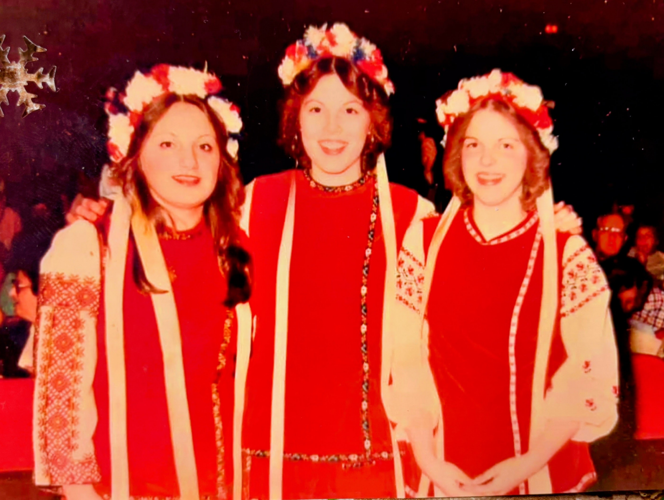Founded in 1972, the Ukrainian dance ensemble Volya in Auburn united children, families and communities through song, dance and culture. “Volya,” which means freedom, brought Auburn together.
Volya in Auburn turned out to be an unexpected discovery for me, an immigrant from Ukraine. As soon as I had the chance, I interviewed the founder of this remarkable group, Joann Regets. At 86 years old, she remains energetic, full of life and brimming with ideas. She and her husband, Robert, were the primary organizers from 1972 until 2005.
My questions from the interview are answered below:
Olena: Joann, you and your husband led the Volya ensemble from 1972 to 2005. Tell us about your family, and why you chose Ukrainian dance.
Joann: Bob (Robert) and I met and got married when I was working as a secretary at a pasta factory, and he was a firefighter. I’m of Irish and German descent, while he was Czech and Lemko. His mother came from Lemkivshchyna — a region spanning Ukraine, Slovakia and Poland, where the Lemko (or Rusyn) community lived, with a culture very close to Ukrainian. That’s where it all began.
People are also reading…
I had always been drawn to Ukrainian culture. As a child, I would run into the poor neighborhoods of the city, where Ukrainian immigrants often danced. These were working people, resting after a hard day, and I felt comfortable among them. Robert absolutely loved these dances.

From left, Volya ensemble members Luba Droczak (Lysiak), Denise Baim (Bianco) and Nancy Fallat (Spinney).
Olena: How did Volya start in Auburn?
Joann: We were parishioners of the Ukrainian Greek Catholic church in Auburn. At that time, there were four Ukrainian clubs in the city, and we often danced at their parties. Later, I began working as a secretary at the Ukrainian church school, and in that same building, in 1972, we founded the Volya ensemble.
Our first dance instructor was our Ukrainian friend Myron Koval, but in 1976 he left to study in Buffalo. Then came Andriy Sakhovsky from Rochester, who worked with the children for one year before falling ill. After that, Slavko Petryk, also from Rochester, took over and remained the group’s dedicated instructor from 1976 to 2009.
Olena: Was it difficult to organize rehearsals and performances?
Joann: The ensemble immediately became popular with local schoolchildren. By 1976, we had 45 students aged 5 to 17. Families enrolled whole generations — older siblings brought the younger ones. Every Tuesday we held classes: younger children earlier in the evening, older ones later. The atmosphere was creative and free. Many kids even did their homework on the benches during rehearsals, as they had no other time.
The tuition fee was symbolic — $2 to $5. Parents ordered costumes from Mrs. Drochak, the mother of teacher Luba Drochak-Lysak. We bought the fabric, and she sewed everything herself, knowing all the details of Ukrainian traditional dress. My own son and daughter also danced in Volya.

From left, Volya ensemble members Joanne Regets, Slavko Petryk, Beth Hulik, Bob Regets and Judy Wilczek.
Olena: What dances were performed?
Joan: Children’s dances, kozachok, vesnyanka, poltava dance, hopak, and even girls’ flirtation.
Olena: And your favorite?
Joann: Hopak, of course! (This is a military dance for men. Very energetic with legs kicking and lots of jumping.)
Olena: Where did Volya perform?
Joann: Everywhere! At parades, Christmas events, Halloween, graduations, school celebrations, nursing homes. And we often traveled — for example, to Rochester. We collaborated with other ensembles such as Cheremosh (Rochester), Odessa (Syracuse) and Yevshan (Rochester).
We participated in Auburn’s bicentennial parade on the Fourth of July with horses as well.

Members of the Volya ensemble on horseback during Auburn's bicentennial parade.
Olena: Where did you find the music?
Joann: Our instructor, Slavko Petryk, composed many of the arrangements. Some parents also helped. Everything was done out of pure enthusiasm. We never worried about money or time spent, because the reward was the children’s joy in creating dances, the admiration of adults, and the happiness of being integrated into Ukrainian culture.
Sadly, nine years ago my husband Robert passed away from cancer. That was the end of Volya in Auburn.
Olena: Why do you think there is no such ensemble today, even though there are children, opportunities and sponsors?
Joann: Because we are no longer here. (But she would be pleased to see it start up again.)

Beth Hulik and Stefan Lysiak share their memories of the Ukrainian dance ensemble Volya in Auburn.
Meeting with Beth Hulik and Stefan Lysak
Beth Hulik, a member of the Ukrainian dance ensemble since childhood and later a coach of the group, kindly shared her memories of this remarkable ensemble with me. Today Beth is 56 years old, works at the high school, has two children — Mitchell and Kacie — and looks wonderful. She brought posters, a performance program of the Volya ensemble, and even a T-shirt with the logo to our meeting.
“We danced with great joy. Many families joined us — brothers and sisters, even entire generations often took part. It was a wonderful time, when Ukrainians and people of other backgrounds in America were united by the famous national traditional dances of Ukraine. It was fun, and we didn’t sit in front of computers and phones like modern kids. Mine, for example, are not interested in dancing, unfortunately,” Beth said. “At first, I just danced as part of the Volya ensemble, and when I grew older, I became a coach. That was a great honor for me. I have preserved a unique collection of photos and videos, stored in my garage. They require an old VCR to watch. I hope that someday we will view those rare recordings together.”
During my conversation with Beth Hulik and Stefan Lysak, an idea came up — we would publish the names of people who at different times danced in the Volia ensemble. Perhaps someone will recognize themselves in the photos, or share their own. Many have likely changed their last names or moved away. But we hope that there are still people in Auburn willing to meet, look through Beth’s archive, and in a warm atmosphere talk about the past victories and achievements of the wonderful ensemble called Volya, which existed in Auburn for about 30 years! After all, "volya" means "freedom."

Olena Abramova
The list of names I was able to collect includes: J. Dec, A. Faiola, M. Faiola, C. Diehl, B. Diehl, L. Droczak, T. Droczak, A. Netti, M. Netti, R. Netti, C. Coon, B. Hulik, D. Pinckney, K. Pinckney, D. Jackson, M. Dubovici, I. Dubovici, S. Dubovici, M. Kobylnak, H. Walsh, M. Baim, K. Goodelle, T. Goodelle, K. Kimak, K. Regets, M. Regets, D. Walawender, C. Coleman, L. Coleman, K. Gera, P. Gera, C. Gonza, C. Hussar, A. Hussar, L. Martino, D. Mills, D. Mills, Vicki and Valerie Petigrass, M. Petroccia, J. Raymond, J. Rusnak, K. Brazee, C. Carnicelli, Chr. Carniselli, M. Hlywa, M. Hoerger, D. Kierst, D. Mills, D. Nowakowski, L. Nowakowski, P. Pysnack, L. Cowan, M. Fastic, D. Royko, C. Yarema, J. Clark, N. Clark, S. McCarthy, M. Rotko, M. Wilder, A. Farinelli, R. Farinelli, A. Pesarchick, O. Pesarchick, A. Steiner, C. Bozek, K. Jervis, B. Weiler, R. Rood, M. Kobylnyak, H. Weiman, K. Tonzi, E. Querns, L. Torous.
If you have additional information, please email me at abramovabc@gmail.com.



















